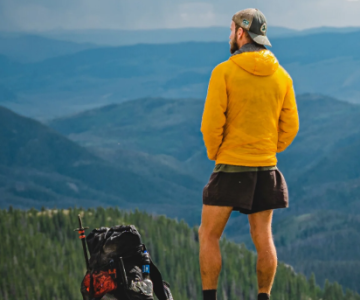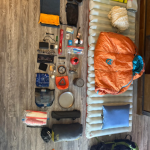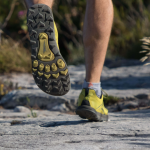Packing a backpack for a hike may seem simple, but how you arrange your gear can mean the difference between a comfortable day on the trail and a painful journey that leaves you questioning your packing choices. Whether you’re a seasoned hiker or a novice, there are countless ways to organize your pack. Some hikers prefer to store certain items in specific compartments, while others may swear by different methods. In this guide, we won’t tell you exactly how to pack your backpack but instead, we’ll focus on the goals you should aim to achieve when packing your gear. These practical tips will help you get the most out of your packing strategy.
Considerations Before You Begin Packing
Before you start shoving gear into your backpack, it’s essential to think about what you’re bringing along and how each item needs to be stored. Each piece of equipment should have a designated spot based on its purpose and your need for quick access.
Quick Access Items
Some items need to be within easy reach, as they might be required at a moment’s notice. Store these in external pockets, at the top of the pack, or in the lid, where you can grab them without too much fuss. Essentials like a first aid kit, your water bottle, rain jacket, headlamp, and map should all be stored in places you can access quickly.
Avoiding Spills
Water bottles, fuel canisters, and similar items should be packed upright to prevent leaks or spills. Many backpacks have exterior pockets that are just the right size for water bottles, making them easy to grab when needed. Make sure the lids are tightly secured to prevent unwanted accidents.
Separating Hazardous Items
Keep items that could contaminate your food or damage other equipment separate from each other. For example, do not store used toilet paper or fuel near your food. Also, keep important documents and maps away from liquids unless they’re stored in waterproof cases.
Packing Tips for Comfort and Safety
Shape and Hardness
When packing your backpack, think about the shape and hardness of your gear. Hard, sharp objects should be surrounded by softer items to prevent them from digging into your back. Similarly, rounder items still need some protection to prevent them from getting damaged during the hike.
Packing Weight
The key to a well-balanced pack is placing heavier items closer to your spine, ideally around the middle of your back. This helps distribute the weight evenly and reduces strain on your body. Once the heavier items are in place, fill the remaining space with lighter, more flexible items.
Utilizing Backpack Compartments
Packing your backpack can feel like solving a puzzle. You need to pack in layers, with one item solidly packed before you add the next. Start by placing your reservoir (if you’re using one) before anything else. Trying to fit a full reservoir into a packed bag can be frustrating. Once that’s in place, you can begin adding your gear, starting with the bulkier items at the bottom.
Organizing Your Pack
Bottom Compartment
The bottom of your backpack is the perfect place for bulky items that you won’t need until you reach camp, like your sleeping bag, tent, and extra clothing. Packing softer gear here also helps protect fragile items from hard drops.
Main Compartment
Divide your items into two categories: dense, heavy gear and lighter, softer gear. The heavier items should be placed closest to your back for better stability, while lighter items can fill the spaces between them. Your rain jacket and extra layers should go near the top of the pack for quick access.
Pack Lid
If you have bulky essentials like a camera or first aid kit that don’t fit in the main compartment, place them in the lid of your pack or external pockets. For everything else, use these spaces to store smaller items such as sunscreen, maps, and your phone. Avoid attaching gear to the outside of your pack, as it’s more likely to get caught on branches and disrupt your balance.
Waist Belt and External Pockets
External waist pockets are ideal for items that you need to access quickly while on the move, such as a map, snacks, or sunglasses. Larger packs also often feature side pockets that are great for water bottles, so you don’t have to take your pack off every time you need a sip.
Keeping Everything Organized
The fewer loose items you have in your pack, the easier it will be to access everything you need. Group similar items together in stuff sacks, ziplock bags, or small pouches to keep your pack neat. For example, you can use separate bags for food, clothing, and toiletries to avoid rummaging around for specific items.
Stove and Cookset
A good way to save space is by packing your stove and fuel canisters inside your cooking pot. This helps reduce the clutter in your pack. If your pot won’t fit a canister, you can use it to store other items, like tea or coffee, for a mid-hike break.
Food Storage
If you’re hiking in bear country, make sure to store your food in a bear canister or hang it in a bear bag. Whether or not you’re in bear territory, it’s a good idea to pack food into smaller bags for easy access and organization. You can separate each meal into ziplock bags or use small bottles for liquids to minimize the risk of spills.
Clothing
Clothing that you might need while hiking, like an extra layer or a rain jacket, should be loosely packed so it can be accessed quickly. Use a dry bag to protect your clothes from any potential leaks or spills. A dry bag also allows you to compress your clothes, saving space. When your clothes get dirty, store them in a mesh stuff sack so moisture and odor can escape.
Toiletries
Store toiletries in a small zippered bag that lets air circulate, keeping everything dry. If you’re packing shampoo and body wash, use the smallest possible screw-top bottles to save space. To prevent mold, avoid using a ziploc bag for items like a toothbrush.
Extra Packing Tips
Check Your Reservoir
Before you pack your reservoir, always double-check that the lid is securely fastened. A leaky reservoir can ruin your clothes and other gear, even if they’re in a dry bag.
Compression Straps
Tighten the compression straps on your pack to ensure that everything stays secure and stable. This not only improves the balance of your pack but also reduces the risk of snagging loose straps on branches or rocks.
When Your Pack Is Too Small
If your pack is bursting at the seams, try attaching less bulky items, like trekking poles, to the outside using compression straps. For larger items like your sleeping bag or pad, many packs have straps designed to hold them securely at the bottom.
Conclusion
Packing a backpack effectively comes down to personal preference, but following these guidelines will make your hike more enjoyable. The best way to perfect your packing technique is through experience—so get out on the trail and learn as you go. Happy hiking!





